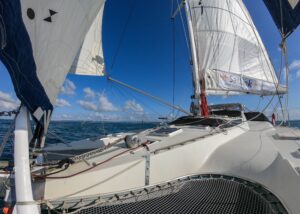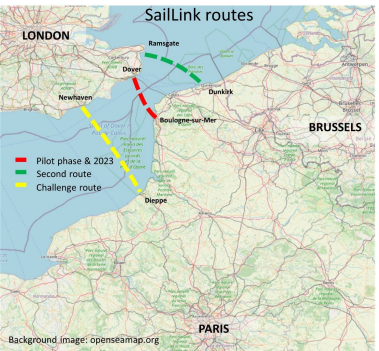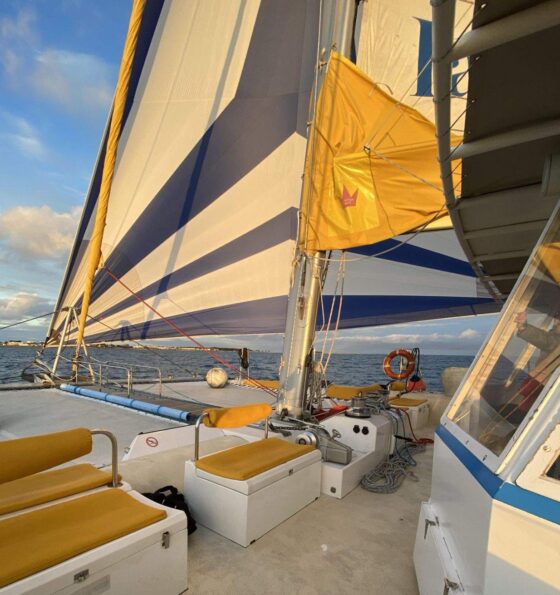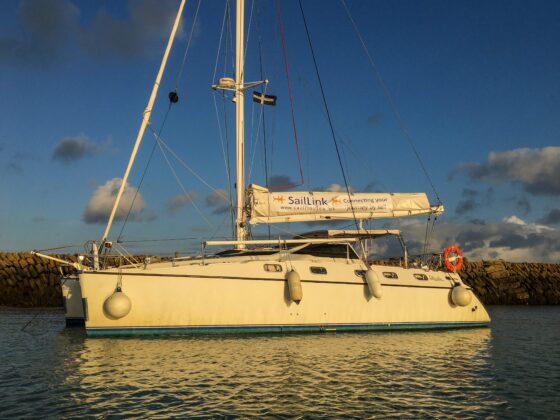
Sailing yacht to run catamaran ferry service from Dover to Boulogne

Dover is being re-connected with Boulogne in northern France by a pioneering cross-channel service. A sailing yacht is being used as ferry service, to transport foot passengers, cycle tourists and small groups.
The new SailLink ferry service will use purpose-built sailing vessels to take a maximum of 12 passengers between Dover in England and Boulogne in France.
The pilot phase with the first passengers will take place from 10-18 September 2022. Pioneer and supporter tickets can be booked through the company’s website, as well as sponsorship opportunities for interested partners. Prices for the pilot phase are £85 for an adult one-way, and £150 for a return.

SailLink says its service will access the commercial pontoons of marinas, thereby connecting passengers with the cultural centres rather than the out-of-town vehicle terminals.
Founder and director Andrew Simons is a boatbuilder, sailor, environmental scientist and, for many years, a regular traveller between the UK and the European continent. He says that SailLink was conceived as the solution to his own preferences and requirements in getting across the English Channel.
Together with Jim Duerden, a highly-experienced sailor and the only RYA catamaran sailing instructor in the UK, the practical and regulatory feasibility of the concept was explored, and a potentially suitable first route was defined.
This first route where a sailing yacht is used to run a ferry service will be between Dover and Boulogne-sur-Mer, with a crossing time of approximately four hours.

“In the first year, we intend to achieve one return crossing per day,” says Simons. “Border formalities will be conducted on departure and arrival by the mobile border agents. Passengers can go from the harbour café onto the boat within 30 mins and the same at the other end. This makes the total crossing time no longer than for a conventional ferry considering the time taken to arrive at the terminal, clear border controls and board the vessel.”
The SailLink routes are said to be designed according to the prevailing winds and tidal streams as well as the accessibility and suitability of the ports. The visitor attractions, onward connection via public transport or connection with cycle routes, are examples of the criteria considered. During the crossing, passengers have the option of joining in with the sailing or helping with regular marine sampling and observations for the company’s research partners.

“Our vessels will be fast, commercial sailing catamarans fitted with electric propulsion for port access, maintaining the schedule and providing a quiet, clean and regenerative form of auxiliary power,” Simons continues. “The company will work with the vehicle ferry operators to carry its passengers and maintain their travel itineraries when weather conditions would make a specific crossing uncomfortable.”
SailLink says its ambition is not only to provide a ‘fantastic and convenient’ passenger experience, but also highly-rewarding career perspectives for its employees as well as inspiring high-performance innovation in commercial sailing vessels.
“We want to provide professionals with a serious sailing job that they can combine with daily shore commitments such as family, and to challenge a UK-French collaboration in the design and construction of a sailing vessel equivalent to the Concorde,” says Simons.
If you’re going onboard this sailing yacht being used as a ferry service, let MIN know.
